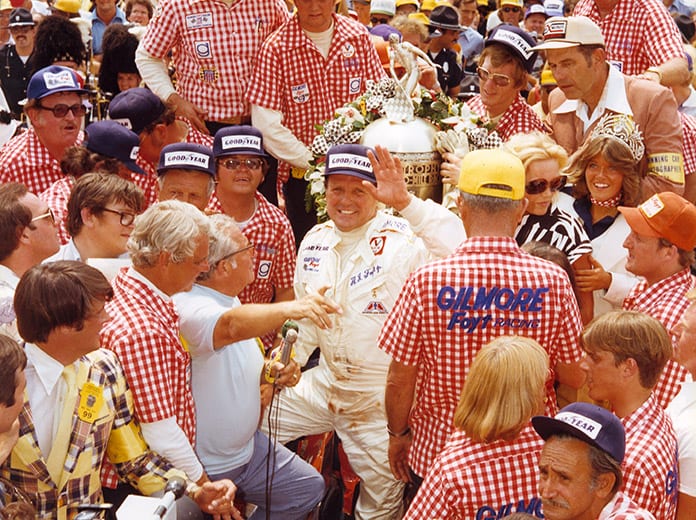A.J. Foyt’s fourth Indianapolis 500 victory is one of the most significant moments in American racing history.
On May 29, 1977, the 42-year-old grandfather from Houston, Texas, recorded what he described as his greatest thrill in racing by winning the 61st Indianapolis 500.
A record crowd estimated at 360,000 was treated to a race-long duel between Foyt and Gordon Johncock. But that battle came to an unexpected conclusion when a broken valve spring caused Johncock’s engine to fail, knocking him out of the lead with 15 laps remaining.
After Johncock coasted to a stop in turn one, Foyt backed off and cruised to victory in his No. 14 Gilmore Racing Coyote/Foyt,
“There were tears in my eyes the last four or five laps,” said the notoriously tough Texan. “It’s been a long, long wait. I had almost forgotten where victory lane is. We’ve had our good days and our bad days, but we never quit.”
Fans and competitors still debate whether Foyt would have caught Johncock if his engine had gone the distance. But Foyt was gaining about a second per lap and had closed the gap to six seconds when Johncock pulled off the track. Foyt said he had a “lot of boost” left and was ready for a “banzai charge” over the final 10 laps.
Foyt’s victory ended a decade of frustration for the six-time USAC National Champion who had previously won the Indianapolis 500 in 1961, 1964 and 1967.
Foyt completed the 500 miles in 3 hours, 5 minutes and 57.16 seconds at an average speed of 161.331 mph. He was 28.63 seconds ahead of Tom Sneva at the checkered flag.
There were 13 lead changes among seven drivers. Johncock led five times for 129 laps while Foyt was in front of the pack four times for 46 laps.
The most important record set that day was obviously the fourth victory, but Foyt also added to other Indy marks he already held. He pushed his total starts to 20; his mileage total to 7,157.5; his lap-prize winnings to $89,516.92; and his total winnings to $1,181,263.10.
After the victory lane festivities, Foyt took a ceremonial pace car ride around the legendary 2.5-mile track with good friend and speedway owner Tony Hulman at his side. That prized moment became much more significant later in the year when Hulman, the man who resurrected the decaying track following World War II, died while undergoing surgery to correct an aneurysm of the aorta on Oct. 27.
